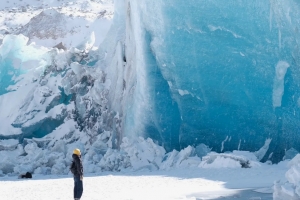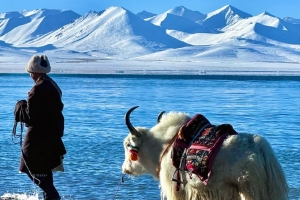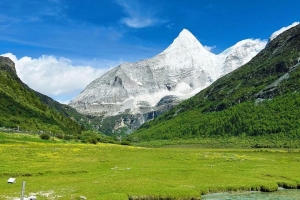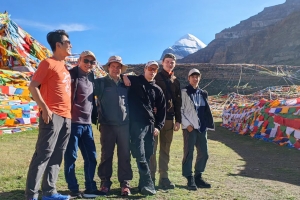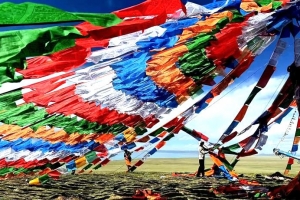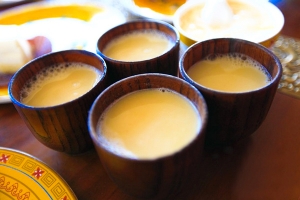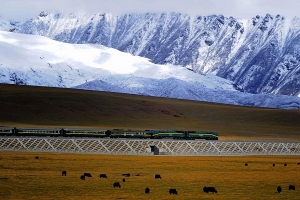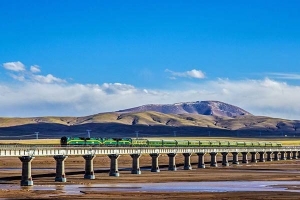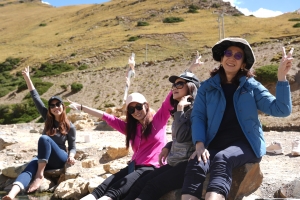Every summer, when mountain flowers begin to bloom and grasslands turn green, herders in Xinjiang usher in the most important moment of the year – migration. This is a migration process spanning hundreds or even thousands of kilometers, and it is also a true portrayal of the continuation of nomadic culture in contemporary life.
For travelers, participating in a nomad’s summer migration is not only a chance to get close to nature but also a unique opportunity to deeply understand the traditional lifestyles of Xinjiang’s ethnic minorities.
What is “Migration”?
“Migration” refers to the nomads’ seasonal movement following the availability of water and pasture. Xinjiang covers a vast area with significant climate differences. Nomads usually settle near grassland villages or lower altitude areas in spring and autumn. In summer, they drive their livestock to higher altitude mountain pastures with richer grass for grazing.
This seasonal migration not only reflects ecological wisdom but also carries the memory and cultural heritage of the ethnic groups.
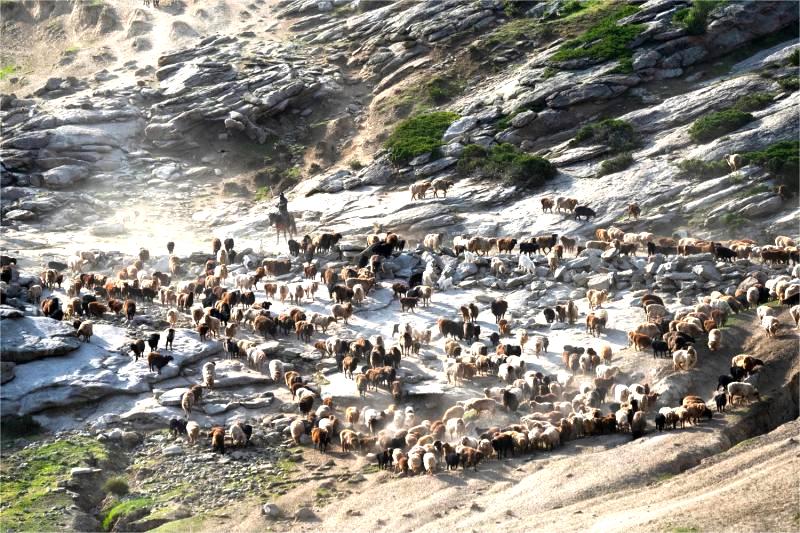
Summer pasture migration
Routes and Scenes of Summer Migration
In places like Ili, Bayinbuluke, and Nalati, the peak migration period is from early June to mid-July each year. You will see vast migration caravans: horse teams, yaks, and sheep slowly moving along grassland roads. Nomads dressed in ethnic costumes herd their livestock, some riding horses or motorcycles, while their vehicles carry tents, yurts, stoves, and other living essentials.
The migration usually lasts several days, with nomads camping outdoors along the way. It is not just a physical movement but a grand collective family event. Some nomads even regard migration as a “festival on the grasslands.”
What Can Tourists Participate In?
Tourists can ride horses or camels alongside nomads, traveling across the vast grasslands and feeling the pace of migration as well as the vastness of the steppe, experiencing a close connection with nature.
Helping to set up yurts is a fun activity where visitors learn how to use wooden frames, felt, and ropes to build the nomads’ traditional “mobile homes,” gaining insight into the wisdom and skills of nomadic living.
Participating in daily herding activities allows tourists to join nomads in herding sheep, milking, and shearing wool, personally experiencing the primitive and simple livestock lifestyle.
Spending the night on the high mountain grassland gives visitors the chance to stay with nomads. At night, sitting around the campfire, listening to nomads tell stories of their ancestors, and tasting authentic milk tea, hand-grabbed meat, and fresh yogurt, visitors can feel the warm hospitality of the grassland people.
When attending folk activities, tourists may have the chance to watch or even participate in traditional Kazakh competitions such as horse racing, “girl chasing,” and wrestling, experiencing the vibrant and passionate ethnic culture.
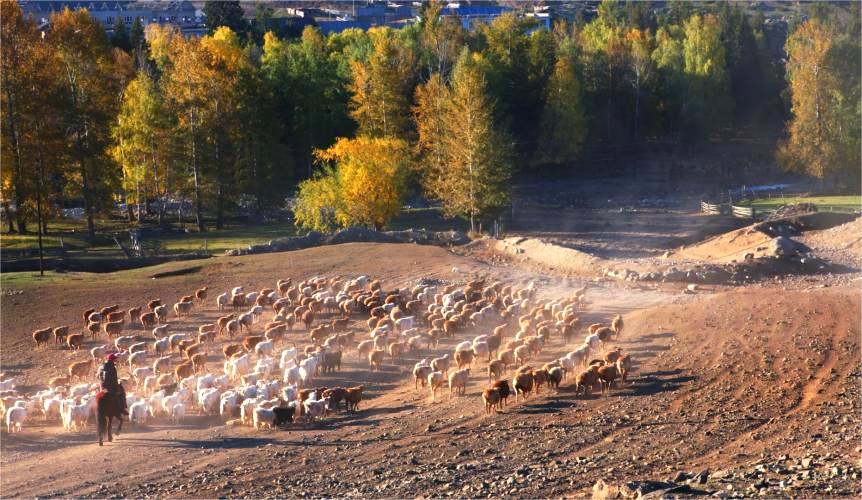
Recommended Ways to Participate
The best time is generally from mid-June to early July each year, though the exact time varies depending on region and climate. This period marks the start of the summer migration and is the best time to experience nomadic life.
Recommended regions for the experience include Ili Zhaosu, Tekesi, Nalati Grassland, Bayinbuluke, and Altay Habahe, where the natural scenery is beautiful and nomadic culture is deeply preserved.
Participation options include signing up for professional nomad experience tours, which are often organized by travel agencies in cooperation with local nomadic families, providing a more organized and safe experience. Alternatively, travelers can self-drive to grassland areas and directly communicate with nomads to seek participation in the migration. For those staying at nomadic guesthouses, it’s advised to contact them in advance to confirm whether they allow participation in migration activities to make proper arrangements.
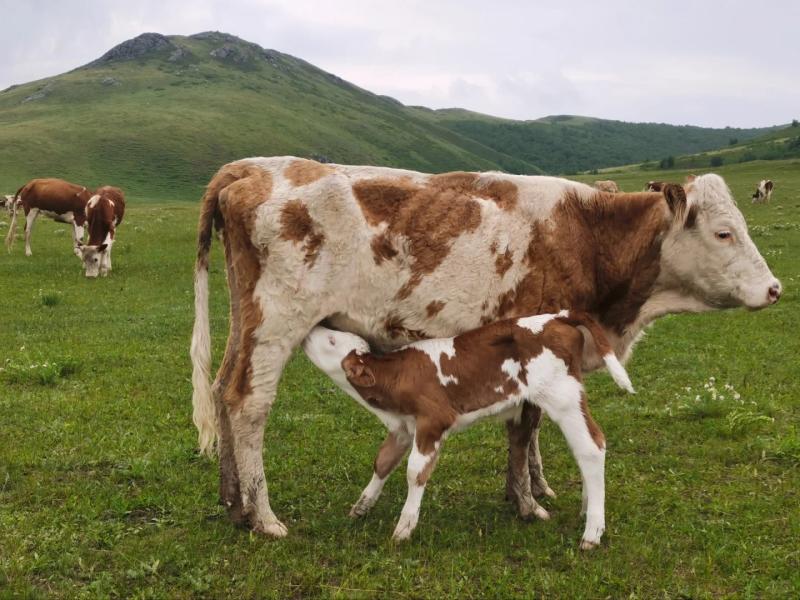
Beautiful summer pasture
Friendly Reminders
1.Respect Local Customs
When visiting nomadic communities, it’s important to show respect. Avoid taking photos without permission, and never enter someone’s yurt uninvited. As a sign of courtesy, remove your hat before entering a tent or home.
2.Bring Sun Protection and Windproof Gear
The highland grasslands are known for strong ultraviolet radiation and significant temperature shifts between day and night. Pack sunscreen, sunglasses, a wide-brimmed hat, and a windproof jacket to stay protected and comfortable throughout the day.
3.Make Reservations in Advance
Not all nomadic families are prepared to host visitors. To ensure a smooth experience and avoid causing disruption, it’s best to book your stay or activity through a trusted guide or travel platform in advance.
4.Ensure Safety During the Trip
Grassland terrain can be unpredictable, and weather changes quickly. Traveling with a local guide is strongly recommended for both safety and cultural insight. Their experience can help you navigate the route and respond to unexpected conditions.
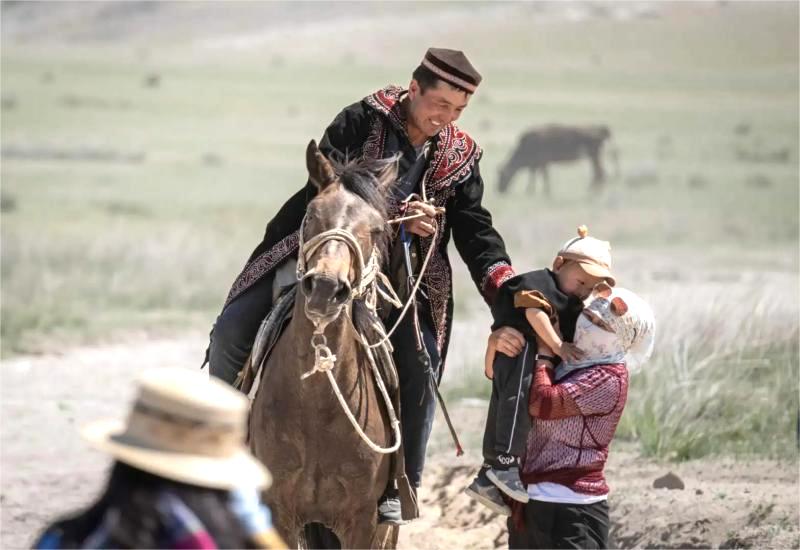
A Journey Across Seasons and Cultures
Following the nomads on migration is not a casual sightseeing tour but an immersive cultural journey. In the winds of the grassland, you will witness the harmony between humans and nature, hear the whispers of history, and feel the pulse of nomadic life.
This is not just a trip but a profound experience about resilience, freedom, and faith

